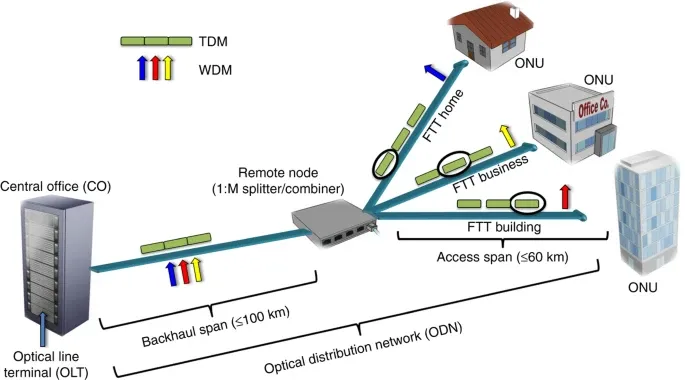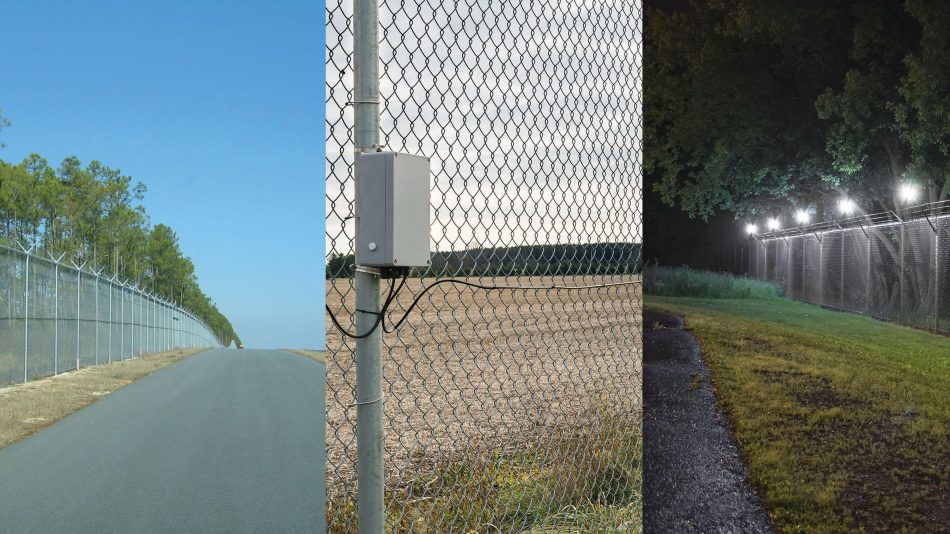Boost Your Safety With Advanced Fiber Optic Protection Solutions
In an era where safety and security is extremely important, sophisticated fiber optic safety and security systems provide a compelling option for improving security throughout various atmospheres. These systems not only flaunt superior transmission capacity and speed for high-resolution security however likewise provide impressive resilience versus exterior interferences. As organizations significantly look for trustworthy methods to secure their properties, the integration of innovative innovations like AI and IoT within fiber optic frameworks raises essential concerns concerning their performance contrasted to conventional systems. What effects do these improvements hold for future safety steps?
Advantages of Fiber Optic Protection
Using the advantages of fiber optic modern technology dramatically boosts security systems throughout numerous applications. Among the key benefits is the enhanced data transfer ability, permitting the transmission of big amounts of information at high rates. This is especially vital for real-time video surveillance, where high-resolution feeds can be sent without latency, making sure prompt action capabilities.
In addition, optical fiber show superior resistance to electro-magnetic disturbance, which is crucial in atmospheres with potential signal disturbances. This integrity makes sure regular efficiency in critical security operations. Fiber optic cords are less prone to tapping and unauthorized accessibility compared to standard copper circuitry, thus boosting information integrity and confidentiality.
An additional significant benefit is the durability of fiber optic systems; they are much more immune to ecological variables such as moisture, temperature changes, and harsh compounds. This resilience equates to decrease upkeep prices and longer life-spans for security setups.
Last but not least, the light-weight nature of fiber optic cable televisions helps with easier installation and directing, particularly in complex frameworks (fiber optic security system). Eventually, the integration of fiber optic technology into protection systems not just boosts protection measures yet likewise enhances operational efficiency
Key Functions to Think About
When evaluating fiber optic safety systems, a number of essential functions should be considered to make certain ideal performance and effectiveness. Analyze the system's discovery range and sensitivity; a comprehensive array enables for keeping an eye on big locations, while high level of sensitivity ensures that even minor disturbances are identified promptly.
Next, think about the combination capacities of the system. A fiber optic protection system should flawlessly user interface with existing safety and security actions such as video cameras and alarms, creating a cohesive protection network.
Sturdiness and ecological resistance are likewise important attributes. Guarantee that the system is made to stand up to severe weather and prospective physical dangers, as this will lengthen its operational life-span.

Lastly, check out the scalability of the system. A robust fiber optic safety and security system should be quickly expandable to suit future requirements without substantial overhauls. By very carefully go to this website taking into consideration these features, you can choose a fiber optic security option that right here enhances security and safety and security in your atmosphere.
Installation Refine Review
To effectively implement a fiber optic protection system, a methodical installment procedure is necessary. This process starts with a detailed site analysis to establish the certain safety requirements and to determine ideal locations for fiber optic cables and protection tools. Following this assessment, the setup team will establish a detailed plan, including cable paths, essential devices, and conformity with regional regulations.
Next, the installation entails laying the fiber optic cords, guaranteeing they are safeguarded from ecological aspects and physical damages. Correct handling techniques are crucial, as fiber optic cords are delicate and can be easily damaged. After the cabling is mounted, connectors and discontinuations are carefully finished to ensure signal honesty.
The subsequent phase includes installing security tools such as cams, motion detectors, and alarm, all incorporated with the fiber optic network. Rigorous screening is conducted to validate that all parts are functioning properly and to ensure optimum performance.

Comparing Fiber Optic to Traditional Solutions
The advancement of safety and security innovation has caused substantial developments in the comparison between fiber optic systems and typical copper-based systems. Fiber optic systems utilize light to send information, supplying exceptional bandwidth and speed compared to their copper counterparts. This leads to boosted information transmission capabilities, making optical fiber suitable for high-resolution video security and real-time tracking.
Additionally, fiber optic cables are resistant to electro-magnetic interference, minimizing the likelihood of signal destruction brought on by external elements. This particular ensures consistent performance, also in tough environments. On the other hand, traditional copper systems are a lot more at risk to interference, causing potential susceptabilities in protection applications.
Longevity is one more benefit of fiber optic systems. They are less susceptible to harm from ecological variables such as dampness and temperature variations, which can endanger copper like this circuitry. Fiber optics are lighter and thinner, allowing for simpler setup and minimized physical footprint.
Nevertheless, traditional systems tend to have reduced initial costs, making them eye-catching for budget-conscious jobs. While fiber optic systems may need a higher upfront investment, their lasting benefits-- such as reduced upkeep costs and greater reliability-- often surpass the preliminary cost, placing them as an exceptional selection for modern-day protection requirements.
Future Fads in Safety And Security Technology
Emerging patterns in safety modern technology are positioned to transform the landscape of security and threat discovery - fiber optic security system. As companies significantly deal with advanced hazards, technologies such as synthetic intelligence (AI) and maker discovering (ML) are coming to be indispensable to safety and security systems. These innovations enhance the capacity of fiber optic systems by making it possible for real-time information evaluation, recognizing abnormalities, and automating feedbacks to possible violations
Additionally, the combination of the Web of Things (IoT) is changing safety frameworks. IoT tools can offer extensive situational awareness and facilitate seamless interaction in between various safety and security components. This interconnectedness allows for more reliable tracking and faster case feedback times.
Biometric authentication is also gaining momentum, offering a higher level of safety through unique physical attributes. As this technology advances, it is most likely to be integrated right into fiber optic systems for boosted gain access to control.
Verdict
In final thought, progressed fiber optic safety systems stand for a substantial development in security and security technology. The transition from typical systems to fiber optic remedies shows a growing pattern in the direction of more reliable and efficient protection measures in an increasingly complex technological landscape.